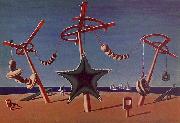Wholesale Oil Painting No Minimum |
|||||||||||
|
|
|||||||||||

|
|||||||||||
|
|
|
||||||||
Edward WadsworthBritish 1889-1949 Edward Wadsworth Gallery 1949). English painter. He was raised in a northern industrial environment that was to appear with great forcefulness in his Vorticist work. He studied engineering in Munich from 1906 to 1907 and, like many other Vorticists (see VORTICISM), Wadsworth interest in the machine showed itself at an early age. He also studied art at the Knirr School in Munich in his spare time, before attending Bradford School of Art; he then studied through a scholarship at the Slade School of Art (1908-12) in London. Early paintings like Harrogate Corporation Brickworks (1908; untraced) show a growing interest in industrial subjects. Under the impact of the Post-Impressionists, he turned for a while to portraiture, beach scenes and still-lifes. His work was included in the final month of the Second Post-Impressionist Exhibition held at the Grafton Galleries in 1912, and in the summer of the same year he joined the Omega Workshops, although his alliance with Roger Fry was short-lived. Wadsworth new friendship with Wyndham Lewis led to an abrupt departure from Omega in October, when several of his works were included in Frank Rutter Post-Impressionist and Futurist exhibitions at the Doro Gallery in London. His painting L Omnibus (c. 1913; untraced; see 1974 exh. cat., no. 12) announced his involvement with motorized themes that clearly derived from Futurism. |
||||||||
|
|
||||||||
Harwich Lighthouse
Harwich Lighthouse Painting ID:: 461 |
1820
Tate Gallery, London 1820 Tate Gallery, London |
|||||||
|
|
||||||||
|
John Constable 1776-1837 British John Constable Locations 1837). English painter and draughtsman. His range and aspirations were less extensive than those of his contemporary J. M. W. Turner, but these two artists have traditionally been linked as the giants of early 19th-century British landscape painting and isolated from the many other artists practising landscape at a time when it was unprecedentedly popular. Constable has often been defined as the great naturalist and deliberately presented himself thus in his correspondence, although his stylistic variety indicates an instability in his perception of what constituted nature. He has also been characterized as having painted only the places he knew intimately, which other artists tended to pass by. While the exclusivity of Constable approach is indisputable, his concern with local scenery was not unique, being shared by the contemporary Norwich artists. By beginning to sketch in oil from nature seriously in 1808, he also conformed with the practice of artists such as Thomas Christopher Hofland (1777-1843), William Alfred Delamotte, Turner and, particularly, the pupils of John Linnell. Turner shared his commitment to establishing landscape as the equal of history painting, despite widespread disbelief in this notion. Nevertheless, although Constable was less singular than he might have liked people to believe, his single-mindedness in portraying so limited a range of sites was unique, and the brilliance of his oil sketching unprecedented, while none of his contemporaries was producing pictures resembling The Haywain (1821; London, N.G.) or the Leaping Horse (1825; London, RA). This very singularity was characteristic of British artists at a time when members of most occupations were stressing their individuality in the context of a rapidly developing capitalist economy Harwich Lighthouse mk82 c.1820 |
||||||||
|
|
||||||||
|
Prev Next
|
||||||||
|
|
||||||||
|
Related Paintings to John Constable :. |
||||||||
|
|
||||||||
|
CONTACT US |

